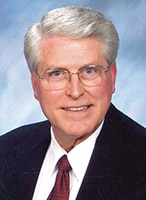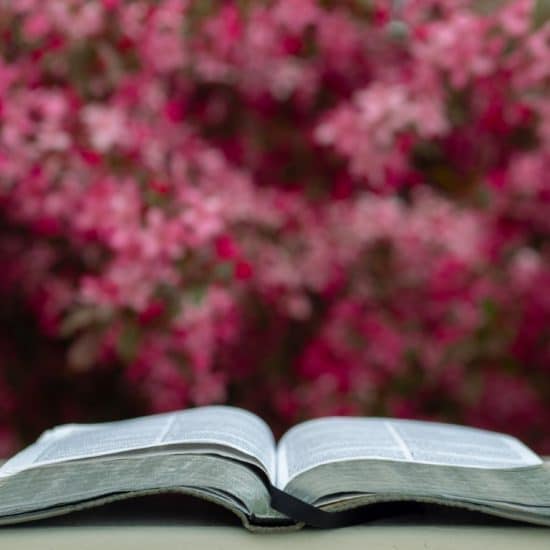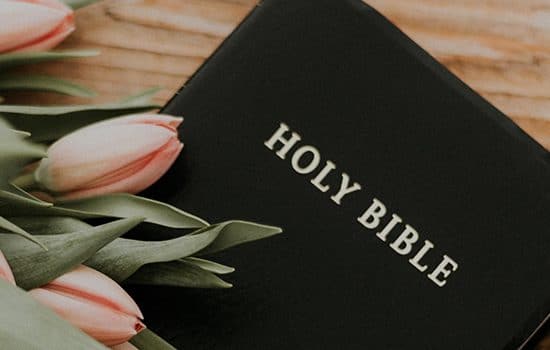
The River of Life
Formations: July 30, 2017
Scripture: Ezekiel 47:1, 3-12
 Michael K OlmstedI remember baptisms from my earliest days in ministry, one at a lake in a beautiful park, others in a stock pond with red mud up to my knees, as we sang “Shall we gather at the river where bright angel feet have trod?” The waters of baptism offer a memorable image of a new beginning to life.
Michael K OlmstedI remember baptisms from my earliest days in ministry, one at a lake in a beautiful park, others in a stock pond with red mud up to my knees, as we sang “Shall we gather at the river where bright angel feet have trod?” The waters of baptism offer a memorable image of a new beginning to life.
The idea of water, specifically a river, goes all the way back to Genesis 2:10: “a river flowed out of Eden to water the garden.” In John 7:38, Jesus declares “Whoever believes in me, as the Scriptures said, ‘From his innermost being shall flow rivers of living water.’” Throughout the Bible are a great many references to water as a source of life, cleansing, renewing and refreshing. Ezekiel’s fourth vision (chapters 40-48) looks to the restoration of Israel and their return to Jerusalem, where the Temple with all its rituals and priesthood are resumed in an age of renewed hope. The vision is of a river of life magnificent in its power.
Once again, God’s power came upon Ezekiel (v. 1) as the prophet is led by a spiritual guide to the entrance of the rebuilt Temple. He sees water flowing from under the Temple threshold and becoming a mighty life-giving river. Jerusalem’s natural water source came from the spring called Gihon outside the city. During King Hezekiah’s reign a tunnel was dug to channel the water into the city to form the pool of Siloam. The river Ezekiel sees is amazing in its size and gifts, a symbol of what God’s love can do for those who trust God and live as his people. The angelic guide uses a measuring line, marking off four segments of 1500 feet of the river. At each mark Ezekiel is instructed to cross over as the river becomes deeper. By the time its length was measured at 6000 feet it is too deep to wade across. It has become a mighty river (v. 5). The guide then leads the prophet back to the banks of the river to show him the many fruit trees growing there. We begin to see a visual connection of this life-giving river to the abundance in the garden of Eden, with its fruit-bearing trees.
Then the guide, blending the actual physical setting of Jerusalem and the Temple with the message of spiritual renewal, describes how the water will flow from God’s Temple toward the east and flow down “the steep slopes” (v. 8). He calls this the ha-‘araba, today known as the Jordan Rift Valley, which runs from the Sea of Galilea in the north to the Gulf of Aquaba in the south. The waters finally drain into the Dead Sea, where the water is saturated with salt and minerals.
But in Ezekiel’s vision this river of life that flows from the Temple threshold ends in fresh water and abundant life (vv. 8-10). The Dead Sea is teeming with all kinds of life! An interesting note is that the surrounding marshes and swamps remain salty, perhaps reflecting a balance in creation, including the necessity of salt. The banks of this river are crowded with fruit-bearing trees that produce all year long and their leaves have healing properties. Is this image of healing meant only for Israel in their restored “Eden” or does it also contain the idea of Israel in their renewed relationship with God will bring healing to the world around them? This vision of hope is clearly for Israel as God’s chosen people, but the Old Testament gives numerous examples of how God’s people should live in the world and model his love and mercy (Gen.18:18, Psalm 96, Isaiah 60:1-3).
The image of water flowing out of Jerusalem is also found in Joel 3:18 and Zechariah 14:8. The same theme appears in the New Testament as Jesus announces: “He who believes in me, as the Scriptures said, ‘From his innermost being shall flow rivers of living waters” (John 7:38). The book of Revelation connects to Ezekiel’s imagery when the angel shows the Apostle John a similar picture of the river of life with fruit trees growing on its banks. John explains: “The trees’ leaves are for the healing of the nations (Rev. 22:1-2).
Studying this wonderful statement of hope for a people who had thrown away their spiritual heritage and turned their backs on God, we are reminded how easily we can drift from faith in God. Israel wanted the good days to return, but were they willing to live as God’s people – or were they only wishing for prosperity and familiarity? A return to spiritual life means a willingness to be God’s people, not just keepers of tradition and owners of success. The phrase “good old days” may conjure warm feelings, but there are things about those old days that were not so great. There was a point in Israel’s wilderness journey to the Promised Land when they wanted to go back to Egypt where food was abundant and life followed a familiar pattern. Was slavery really more attractive than being God’s people (Exodus 16:2-3)? Longing is often shaped by clouded memories.
Life progresses with a variety of challenges, blessings and some obligations. When we face the hard times, illness, failed marriage, difficult career situations or shattered friendships, we realize that the one constant and clear direction we must maintain is toward God. Israel did go home. Ezekiel’s vision was about what could be, but the record shows the same sad pattern continued. Then comes God and his grace.
We read this story knowing the hope of Christ. God’s continuing grace, against the background of Israel’s repeated failures, reminds us of a better way. There is a mighty river of hope flowing from the eternal throne of God, recorded from Genesis to Revelation, an endless offer of everlasting life inviting us to find a new direction and meaning. This life is not found in traditions, creeds, formulas of success, family heritage or secret societies. Only God’s gracious gift of life in Jesus Christ can shape us as a people who love, serve and hope beyond the complications of this physical world. Shall we gather at the river?
Retired after more than 45 years in pastoral ministry, Michael K. Olmsted enjoys family, supply preaching and interim work, literature, history, the arts and antiques.
Formations is a curriculum series from Smyth & Helwys Publishing, Inc. through NextSunday Resources.
The PDF download requires the free Acrobat Reader program. It can be downloaded and installed at https://get.adobe.com/reader.


